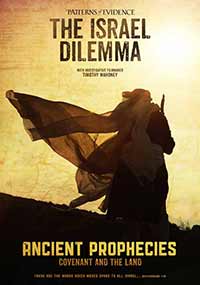What Is The Most Common Injury For A Mother?
 By
By
Bringing a new life into the world is a miraculous and life-changing experience. However, the journey of motherhood is not without its challenges, and sometimes, those challenges can lead to injuries. One of the most common concerns during childbirth is the potential for maternal injuries. This article will explore the most common injuries mothers may experience during childbirth and the factors contributing to them. Perineal tears are among the most common injuries mothers can experience during childbirth. These tears occur between the vaginal opening and the anus, known as the perineum. Perineal tears are classified into four degrees, with first-degree tears being the mildest and fourth-degree tears being the most severe. A healthcare provider can spontaneously or deliberately incise these tears to facilitate birth. In cases where medical negligence is suspected, consulting a birth injury attorney may be necessary to explore legal options. For easier labor and delivery, many mothers choose an episiotomy, in which a surgical incision is created in the perineum. Although episiotomies were once a routine part of childbirth, they are now less commonly performed and are generally reserved for specific medical indications. Episiotomies can result in pain, discomfort, and a longer recovery period for mothers. Postpartum hemorrhage (PPH) is another concern during childbirth, although it's less common than perineal tears. PPH occurs when excessive bleeding after delivery, typically within 24 hours. It can be caused by factors such as uterine atony (the uterus not contracting properly), retained placental tissue, or uterine or vaginal wall tears. PPH can be life-threatening if not promptly managed. It may require interventions like uterine massage, medication, or even surgery to control the bleeding and stabilize the mother's condition. Childbirth can weaken the pelvic floor muscles supporting the bladder, uterus, and rectum. This weakened state can result in pelvic floor diseases such as urine incontinence and prolapse of pelvic organs. Urinary incontinence involves involuntary urine leakage, while pelvic organ prolapse refers to the descent of pelvic organs into the vaginal canal. Kegel exercises, often called pelvic floor exercises, are frequently suggested to help strengthen the pelvic floor muscles and reduce the chance of several pelvic floor problems. When pelvic organ prolapse is severe, surgery may be required for correction. Even though they aren't injuries in the usual sense, preeclampsia and eclampsia are both dangerous medical illnesses that can crop up during pregnancy and the delivery of a baby. Protein in the urine, edema, and elevated blood pressure are the hallmarks of preeclampsia. In contrast, eclampsia is a severe form of preeclampsia that can lead to seizures. These conditions can be life-threatening for both the mother and the baby. They require immediate medical attention, and the only definitive treatment is delivery of the baby, even if it's premature. Prolonged Labor: Labor that lasts an unusually long can increase the risk of perineal tears, episiotomies, and other complications. Instrumental Deliveries: Using forceps or vacuum extraction to assist in delivery may increase the risk of perineal injuries. Cesarean Section: While C-sections are often performed to prevent complications, they also come with potential complications, including infection, bleeding, and scarring. Multiple Pregnancies: Mothers carrying multiple fetuses are at a higher risk of complications, including premature birth and preeclampsia. Maternal Age: Older women may experience more difficulties during labor and delivery. Preexisting Medical Conditions: Women with preexisting medical conditions, such as diabetes or high blood pressure, may face additional challenges during pregnancy and childbirth. Maternal injuries are one of the risks associated with childbirth, which is otherwise a life-altering process that can offer great joy. Perineal tears, episiotomies, postpartum hemorrhage, pelvic floor disorders, and complications like preeclampsia and eclampsia are some of the most common challenges mothers may face during childbirth. While these injuries and complications can be daunting, modern medical care has significantly improved the management and treatment of these issues. Safe childbirth is a team effort, and the paraprofessionals on the birthing team may help ensure that all members of the birthing family are safe and healthy. Perineal Tears
Episiotomy
Postpartum Hemorrhage
Pelvic Floor Disorders
Preeclampsia and Eclampsia
Factors Contributing to Maternal Injuries
Final Say






